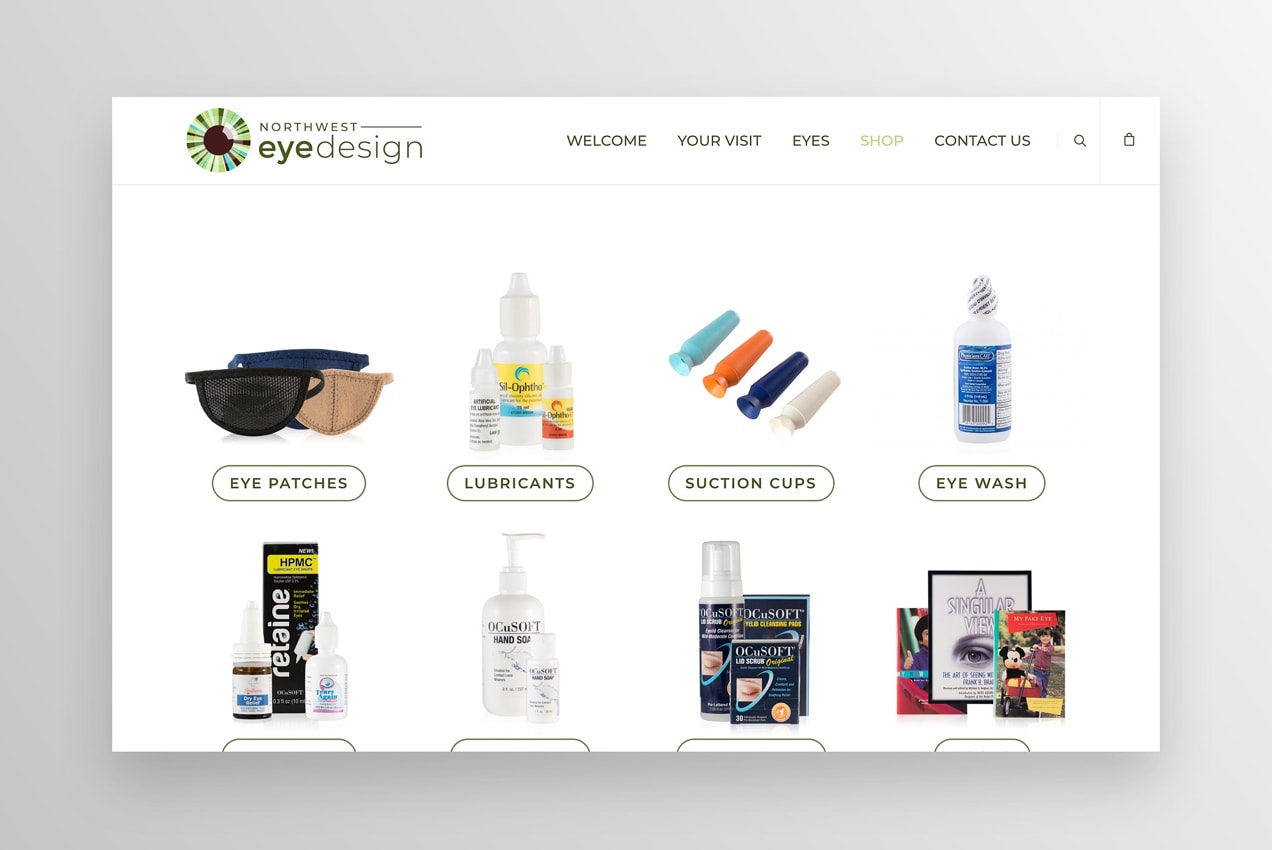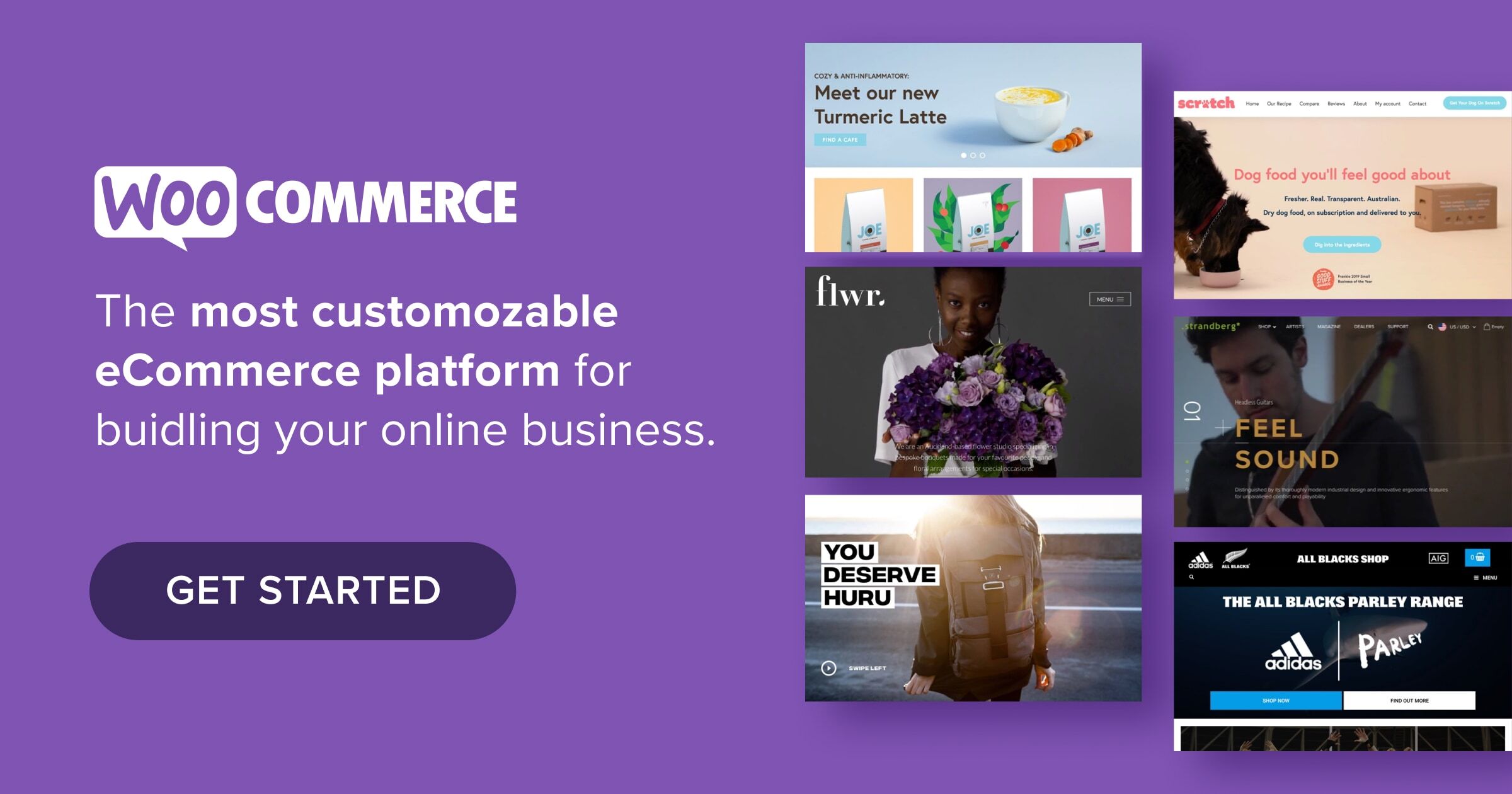When Northwest Eye Design set out to revamp their website, there was one thing they wouldn’t compromise: patient care.
The Washington-based company primarily creates prosthetic eyes, but they also sell related products online, like eye patches, lubricants, and other accessories. They’ve made patient care the foundation of their business, so it was important to convey that on their website. But while putting patients at the center of a practice in real life makes sense, how do you translate that to a virtual experience?
We sat down with Emily Spiker, the Administrative Coordinator of Northwest Eye Design, to discuss how the family-owned business made sure that their website always puts customers first, no matter what.
Q. It must be interesting when you meet new people and tell them what you do for a living. How do you explain it in the simplest terms?
When people ask where I work and what I do, it’s always an interesting conversation. People have a lot of questions. It’s not a common field. I didn’t know about prosthetic eyes before I started working here. I let people know that we make prosthetic eyes for patients who have lost an eye.
Q. What are the most common questions people ask?
The number one question is, “How do people lose an eye?” They may have had trauma or disease, or it could be cancer related. Some babies are born with a condition called microphthalmia where they have one small eye. It could be an array of different things.

Q. The core value of the company is patient care. Can you talk a little about what that means?
We walk alongside our patients through the journey of loss. We really come together to support them and their families as they grieve and figure out what this whole new thing is all about.
It’s as much about creating custom ocular prostheses as it is caring for people. We could just make a prosthetic eye and people would be happy and move along. But we really do care for the whole person and we’re genuinely invested in their happiness.
Q. How did you redesign your website to bring patients to the center of the experience?
Here’s something amazing about the website. Every picture includes a patient of ours and every picture was taken by a patient of ours. We wanted a lot of photos that communicated the artistry that our ocularists have.

But it’s not just about the images. From a UX (user experience) point of view, we mapped everything out by imagining what a new patient experience looks and feels like. Is the information easy to find? Is it easy to connect? We made sure it was fully accessible so every one of our patients could use the website easily.
Q. The online store was your main focus in the beginning?
I joined the team in 2016 primarily to help with the online store. There had been hardly any maintenance. I got busy updating pricing and pictures and was doing that on a part-time basis and, very quickly, the role shifted to Administrative Coordinator.

Q. What do you sell?
The store came online in 2007 because the owners wanted to make it easier for patients to access the kinds of products they need. We sell products for prosthetic eyes and beyond that, products specific to eye care: allergy relief drops, artificial tear products, eyelid care products, and more. If a patient is having any kind of eye issues, they can go straight to the website to get whatever they need.
Q. You ended up moving the site over to WordPress when you did a total redesign?
We moved from Volusion to WordPress and redesigned the site for multiple reasons. It was out of date and pretty clunky from a user standpoint. We ended up changing our name and rebranding at the same time.
Q. How did you end up choosing WordPress and WooCommerce?
The retail store was a real driver for us. We looked at other options and really ended up finding that with Shopify and all the other platforms, if you were gaining something over here, you were losing something over there.
There wasn’t any other single platform that offered everything. That made it easy to move to WordPress and WooCommerce.
WooCommerce is plug-and-play for someone like me who hasn’t ever built a website and doesn’t know how to code. I’m able to add products to the store and we don’t have to depend on a designer to come in and create anything for us. From a cost standpoint, that’s a win.
Also, even if it doesn’t have the functionality we need out of the box, we can easily customize and expand.
Q. What are some of the top plugins that you use?
We ship all over the world and international shipping has its challenges. ShipStation simplifies the process, filling out customs information automatically. There’s no legwork on our end to get shipments out. Just click and print and you’re ready to go. It also allows us to brand packing slips and shipping labels, which was important to us given that we had just invested in a whole new brand.
Q. You use Jilt for email marketing. Is that correct?
We use Jilt to automate customer emails. There are lots of different ways to communicate using the platform, like newsletters, sales announcements, follow-up emails, and abandoned cart emails. It’s been worth the time and energy to create those different tools. From a cost standpoint, it’s paid for itself.
Q. What else do you do to market your site?
Jilt is actually relatively new for us. We started working with a digital marketing company to revamp our marketing efforts earlier this year and email was something they immediately identified.
To attract new customers, they started writing content for our blog and running Google Ads. We also implemented AdRoll for remarketing ads, which has increased first-time customer conversions and repeat business. Our sales had been in a slight decline for quite some time and recently we’ve seen gains of 60% or more month over month.
Q. Which other plugins have you found valuable?
- Akismet Anti-Spam prevents us from having to weed through spam comments on products and blog posts.
- WooCommerce Tax simplifies tax calculations and rates.
- Tidio increases conversion rates and helps us provide excellent customer service through live chat.
- WooCommerce Subscriptions lets customers get the products they use regularly on a recurring basis. Subscriptions have been much more popular than we expected — we’re really impressed.
Q. Before we wrap up, are there any stories over the years that really stick out?
We have a boy who has had a prosthetic eye since he was a baby. He’s five or six now. When his family comes in, we all hug each other. But the best part is that every time he comes in, he’s wearing a different costume — Harry Potter, Peter Pan, etc.
Recently, he came in for a new prosthesis because he had outgrown the old one. One part of the process is doing a silicone mold in the socket. It’s an uncomfortable, weird sensation and kids can have a hard time with it. This time, he was dressed as Indiana Jones, so we stuck spiders on the ceiling and played music from the soundtrack to distract him from what was happening and he was all about it.




